
Archives
Contribute
| India British Period (1800 CE-1947 CE) – Philosophy And Religion |
Satyendra Sharma
03/02/2023
Multiple accounts of Western travelers to India suggest a remarkable tolerance between the various religious sects as they lived their daily life. (Ref 1). The British period saw the deterioration of the Indian society through social and religious divisions. A slow reconstruction by new thought leaders began in the nineteenth century culminating in the liberation of India. The fissure in the 18th century society occurred through urbanization. Industrialization forced the creation of a service class to do the menial jobs of cleaning toilets and disposing the dead. The British period taxation caused massive landlessness and migration to the urban centers in search of livelihood. The new menial class was looked down upon. it was socially outcast. Voluminous literature was created in Germany by invoking a mythical race in India through the evidence of warriors in the epic Mahabharata(Ref 2). Adolf Holtzmann (1810 CE – 1870 CE) and others tried to interpret MahÄbhÄrata and BhagvadgÄ«tÄ to promote this hypothesis constructing the Aryan race model in north India. An artificial divide was constructed. The north-south divide continues as a major fissure in the Indian society. The British used these divisions for their army recruitment policies by selecting people from so called “martial races†and creating units coined after the names of these races. The army recruitment was a vehicle through which the British aimed to inculcate Western customs and beliefs in the colonial India. This had an adverse effect leading to the Sepoy Revolt of 1857 (Figure 1). It was the beginning of the Indian awakening. Figure 1: Artist’s rendering of the Sepoy Mutiny of 1857 CE Hindus adopted orthodox beliefs to escape oppression. Uncertainty in life, starvation and scare caused superstitions. The ritual of sati, untouchability, child marriage, idolatry and subjugation of women proliferated in the name of purification. The spread of English education did bring Indian intellectuals in touch with the western liberalism. (Ref 3, Ref 4.) Figure 2. Raja Ram Mohan Roy A religious movement was initiated by a local leader in Bengal, Raja Ram Mohan Roy (Figure 2). Titled Brahmo Samaj, the aim was to reform the socio-religious landscape of Hinduism by rejecting idolatry and the rituals. A unitarian approach of belief in one supreme brahman was the key. (Ref 5) Figure 3. Swami Dayanand Saraswati Swami Dayananda Saraswati (Figure 3), a Hindu monk, developed Arya Samaj in Punjab. Rejecting idolatry and the multitude of rituals, he stressed the authority of the Vedas and the Vedic prescriptions. His monthly journal Satyartha Prakash became popular. (Ref 6) Figure 4. Swami Vivekananda Ramakrishna Paramahansa (1836CE-1886CE), a Hindu priest in Bengal claimed the God-realization through the loving practice of the individual belief system. He preached religious harmony respecting all beliefs. His disciple Narendranath Datta (1863CE-1903CE), traveled the world as a monk with a new name Swami Vivekananda. Swami Vivekananda became an icon to the Indian revival. (Ref 7) Figure 5. Sri Aurobindo Ghose Sri Aurobindo Ghose (1872 CE- 1950 CE, Figure 5), was trained in England and qualified as a British administrative officer. He turned himself into a revolutionary and evaded British capture. In a French occupied area in South India, he contemplated on the rebirth of a more powerful India. His teachings on Integral Yoga have world-wide following. Figure 6. Mahatma Gandhi Mahatma Gandhi (1869 CE – 1948 CE, Figure 6) developed his socio-religious ideas and political philosophy during his struggle in South Africa. Satya (Truth) and ahminsÄ (non-violence) were two main aspects of Gandhian thought. Truth is God with morals and code of conduct as its basis. Since all life has one divine origin, violence towards others is violence on one’s own self. All conflicts can be resolved without resorting to violence. He practiced these principles during the freedom struggle. He made spinning wheel CharkhÄ as a symbol of passive resistance, economic freedom and moral virtues. (Ref 8, Ref 9) Post-mutiny India was a divided community on religious lines as Hindus embraced Western education system dominating the intellectual and economic landscape. The fear of Hindu domination was exploited by the British to encourage Muslims to adopt a separate religious identity with the formation of All India Muslim League. AIML was eventually instrumental in the formation of Pakistan. Likewise, to serve the interests of orthodox Hindus in Congress and around the country, Hindu Mahasabha was founded in 1915 thus further widening the religious divide that eventually led to sectarian riots of 1947. References 1. V.P.S. Raguvanshi, Religious life in India at the Advent of British Rule, Proceedings of the Indian History Congress, Vol. 23, Part - II (1960), pp. 100-107 Dr. Satyendra Sharma leads the Philosophy and Religion track in India Discovery Center's project on "Evolution of Indian Culture: Pre-history to 1947AD". More information and updates on the project are available at https://www.facebook.com/Evolution-of-Indian-Culture-An-IDC-Project-107749391111922 Information on India Discovery Center is at https://www.indiadiscoverycenter.org (c) Copyright 2023 India Discovery Center, Inc. All rights reserved.
Satyendra Sharma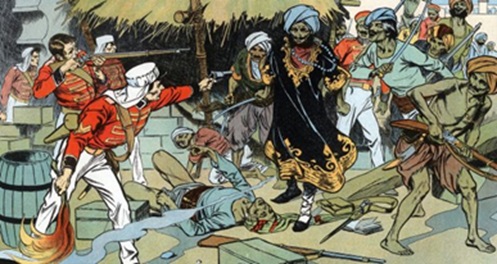
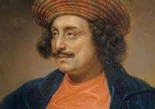
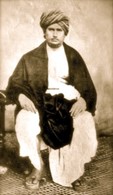
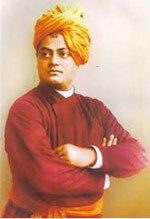
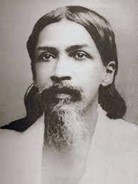
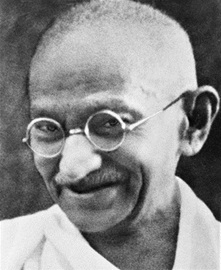
2. Vishwa Alduri and Joydeep Bagchee, The Nay Science, Oxford University Press, 2014, pp-490.
3. Cameron Freeman, Christianity in British Colonial India and the Crystallization of Modern Hindu Religious Identities (https://camronfreeman.com/socio-cultural-anthropology/)
4. Kumar, Sunil. Contribution of Western Culture in Nationalism of India, International Journal of History and Cultural Studies, Volume 3, Issue 4, PP 22-25, 2017.
5. Sivanath Sastri, History of the Brahmo Samaj, Sadharan Brahmo Samaj, pp 663, 1974 (second edition)
6. Lajpat Rai, Arya Samaj, Longmans, Green and CO., pp352, 1915.
7. Swami Nikhilanada, Swami Vivekananda A Biography, Ramakrishna-Vivekananda Center, New York, pp 232, 1953
8. Ranade, R.D, Spiritual Awakening in Gandhi and other Indian Saints, Sarva Seva Sangha-Prakashan, Rajghat, Varanasi, India, 2003, pp 207
9. Rolland, Romain, Mahatma Gandhi the man who became one with the universal being, , Publication Division, IB Ministry, India, pp 126, 1924
10. Pictures/images – courtesy Wikipedia.
You may also access this article through our web-site http://www.lokvani.com/






.jpg)
